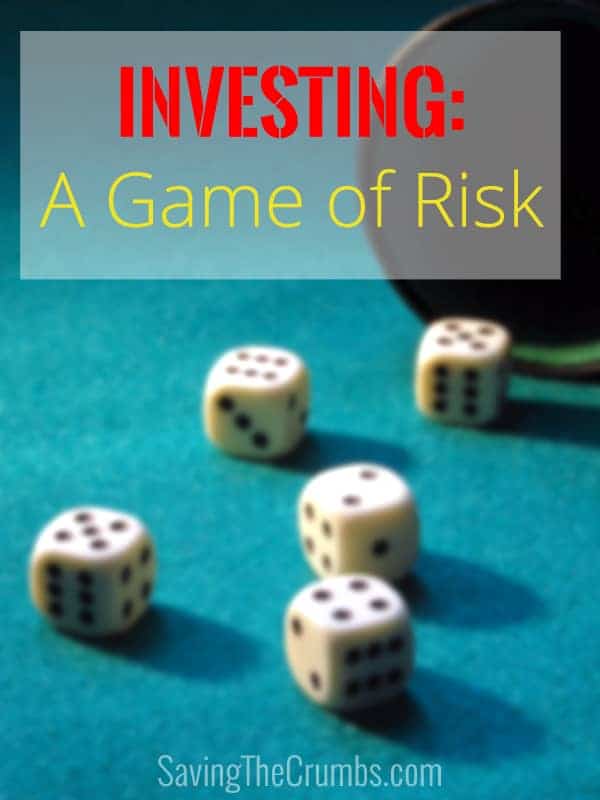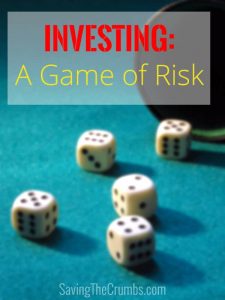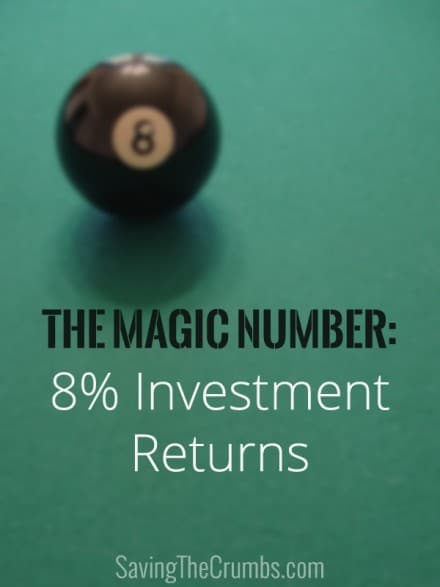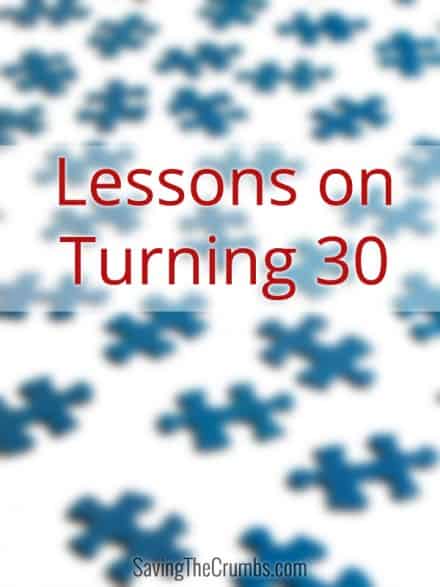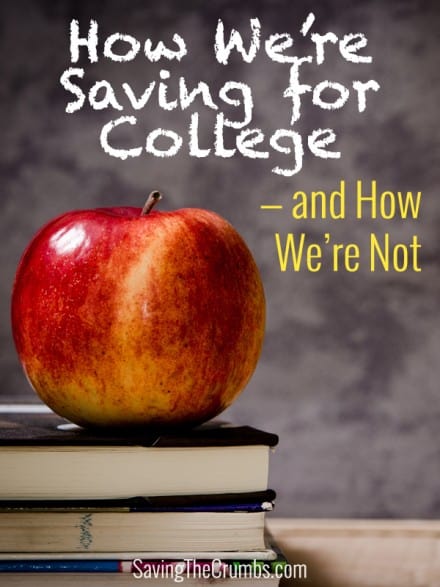Ever had those water cooler conversations where your friends brag about how much their stocks (or Bitcoin!) have gone up recently? Before you plow your life savings into their hot stock pick, don’t forget that there’s a dark side to investing that is rarely discussed in such conversations: Risk.
Risk, in basic English, is simply the chance of losing your money. All investments have risk involved—yes, ALL! But it’s not glamorous to talk about that side of investing when we rather pump up our returns. Certainly nobody is going to gloat about losing their entire stake in Bear Stearns when they crashed and burned in 2008!
Our Internal Risk Meter
We all have an internal risk meter. Let me illustrate how it works to protect us in real life. Say you have $1000 and you have two options to invest it. One is to put it into a CD at your online bank earning 1% interest. The second is as a business loan to your eccentric college roommate who will pay you 10% interest. Which would you choose?
A purely mathematical approach of which investment will earn the most money will easily lead to issuing the business loan. However, I suspect that most people would have serious reservations about loaning that money. And that discomfort is because we have NO IDEA whether we’ll ever get our money back, much less any interest! This is our internal risk meter in action. Just like how different people have different feelings toward sky-diving or bungee-jumping, every individual has a differently calibrated risk meter, so risk tolerance is a rather subjective things from person to person.
The problem is that the risk in many investments is not always apparent, and so our risk meter has to be educated in order to be able to not be duped into an unwise investment. An important rule of thumb to remember is that higher returns correspond with higher risk. So no matter how benign the outward appearance of the deal; anyone who offers you sky-high returns overnight with “no risk” is lying, every time.
What’s Your Holding Period?
Warren Buffett mixes things up a bit and offers a more nuanced definition of risk:
The riskiness of an investment is not measured by beta (a Wall Street term encompassing volatility and often used in measuring risk) but rather by the probability – the reasoned probability – of that investment causing its owner a loss of purchasing-power over his contemplated holding period. Assets can fluctuate greatly in price and not be risky as long as they are reasonably certain to deliver increased purchasing power over their holding period… (emphasis supplied)
So Buffett amplifies the definition of risk by explaining that it is actually the potential loss of purchasing power over the contemplated holding period. Let me to illustrate what this means.
If you invest in an S&P 500 index fund today, the value of your holding (i.e. your purchasing power) might drop 10% in a week (all those talking heads in the news make sure you’re aware of this possibility), so if your holding period is one week, the stock market is very risky; much riskier than putting that money into your FDIC insured savings account. This constant up and down gyration of stock prices is commonly referred to as volatility or beta.
However, if you hold that index fund for thirty years, based on historical data, it is very likely to give you an average annual yield of 7-8% or more, which when adjusted for inflation is a 3-5% gain in purchasing power. If you put that amount in a 1% savings account, you are guaranteed a loss in purchasing power due to inflation even though the dollar amount remains the same. So over a long-term holding period, according to Buffett’s definition, the savings account is much riskier.
To put it simply, the riskiness of different investments MAY vary depending on your anticipating holding period. This is absolutely key because in missing this point, you might inadvertently take on undue risk while thinking you’re reducing it! But I hasten to add, that there certainly ARE investments that are risky both in the long-term AND in the short-term so be sure to do your homework before investing in anything you don’t understand.
Short-term vs. Long-term
So a key variable to consider when determining the riskiness of investments is the length of time that we plan to hold it. If we’re saving up to pay for school bills that are coming up in 6 months, we don’t want that money going into the stock market. But if we’re saving up for retirement that’s 30 years away, we don’t want that money sitting in a savings account.
Similarly, the investment plan for a 20-something fresh out of college will look drastically different than someone who’s 59 and hoping to retire a few years early. The time horizons for their investments affect the amount of risk they can handle.
Here’s a table that summarizes what we’re talking about:
| Short-term Holding Period | Long-term Holding Period | |
| Lower Risk | Things that don’t fluctuate in price, and/or are guaranteed/insured:
|
Things that have a proven track record to be productive and increase in value over a long time horizon:
|
| Higher Risk | Things that have significant day-to-day volatility in their value, low-liquidity, or subject to unpredictable external forces (weather):
|
Things that do not have a high enough yield to surpass the rate of inflation:
|
What’s a Crumb Saver to Do?
So keeping our money in a low-interest savings account (or worse yet, in our 0% interest mattress!) is highly risky long-term because it is guaranteed to result in reduced purchasing power due to inflation. But investments yielding higher returns result in greater volatility, meaning there’s tremendous risk in losing money in the short-term. What’s a Crumb Saver to do?
The solution is to take a two-pronged approach. “Save” the money that you’ll need in the short-term in insured, low-volatility instruments, but “invest” your other funds in higher-returning investments for the long term (we’ll define long-term as at least 5 years).
So the lesson is to save for the short-term and invest for the long-term.
Playing the Game
Investing is a game of risk. Risk is not something that can ever be avoided completely, and so the task is to reduce our exposure to it as far as possible. Skill in managing short-term and long-term risk is important to keep us on track to hit our financial goals.
I’ve just scratched the surface of all there is to say on this subject, but hopefully this has put up some guardrails for those of us on the fast-track to put our hard-earned crumb-stash to work.
What tips do you have on managing investment risk? Please share with us in the comments!

